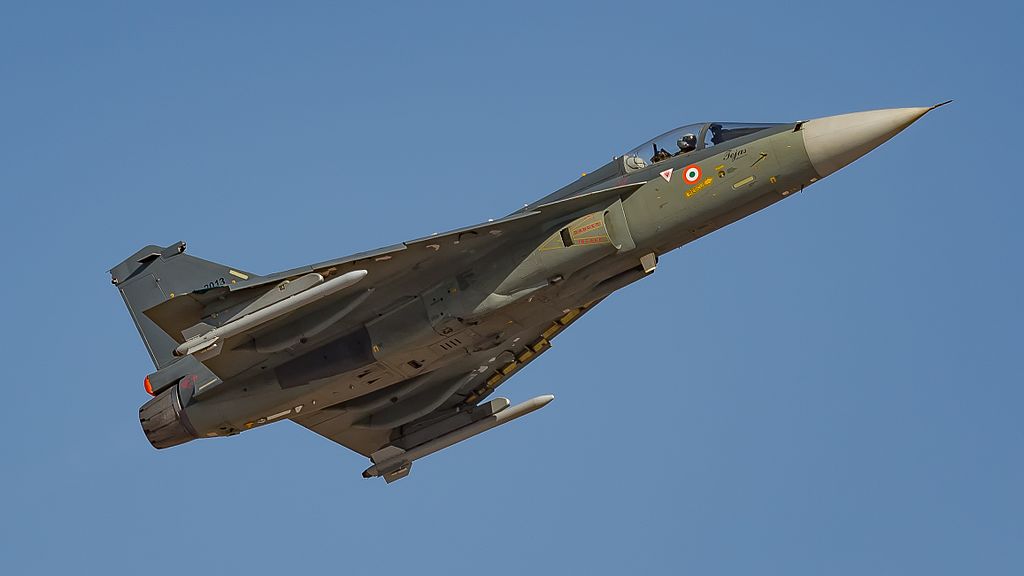
Now let’s look at some products that the armed forces of a country ask, especially India.
Battle Tank: This tank must be light, travel on desserts, marshy lands, rivers. It must fire missiles and then quickly relocate to a new place very fast. It must withstand every possible attack from 1 to 10 on a scale of 1 to 10. It must be prepared for biological and nuclear situations. It can fire at into the air at aircraft. It must move at top speeds.
Fighter Plane: Must carry multiple missiles including nuclear. Travel at speeds greater than sound. Must be undetectable by enemy. Fly at very great heights. Be able to fly in all directions including reversing very quickly. It must be able to deflect or avoid missile attacks. It must be able to fly at low altitudes with great manoeuvrability undetected. The pilot should be able to see enemy planes beyond the visual range and target/ shoot them down without their seeing him.
Now, you can create such kind of wish lists for hundreds of products and unlike what was shown in the Arnold Schwarzenegger movie Commando, a nation cannot walk into a Mall and pick up such items off the shelf. Also given that the demand for such products would be limited, no company would invest unless someone is paying for it. No company makes generic products, multiple companies do not make the same product. For example, the Mirage 2000 developed in the late 70’s has sold just over 600 nos globally and yet considered one of the best fighter planes.
While USA has over 14,000 aircraft of all kinds, Russia has just 4,800 and between all the arms of the Indian armed forces, including trainers, transport, choppers etc India has just over 2,000 aircraft. This indicates the kind of demand for such kind of products and consequently the challenges for anyone investing in designing/developing such products. Consequently, when any country, including India goes shopping, they are not comparing apples to apples just because it is called an apple. To stretch the argument if you ask for an Apple it can be the sour Granny Smith, the sweet Simla or even the high-end laptop or a mobile phone.
Consequently, in this kind of scenario a client country seeking to buy a high technology defence related item must choose the best it can with the funds available and based on its threat perceptions and military situations.
A purchasing country would broadly look for the following aspects when it seeks to buy a high technology defence item. These words have wide meanings and definitions and it would be difficult to explain all here. But an attempt is made to give a better understanding. These can refer to any kind of defence purchases from tanks to missiles to aircraft to an armoured vehicle to an artillery gun.
Performance:
This seems clear and self-explanatory. However, it depends on the conditions of performance. Desert? 65 Deg C weather? Minus 40 Deg C weather? Snow? High altitude? Urban locales? Jungles and marshy land? Should it meet all or only some? Do you buy different products for different performances? What kind of arms and ammunition do you need? Where will they be used? Urban? Jungle? Dessert? Enemy territory and if so, what kind again. What levels of collateral damages would you accept? How lethal? How flexible? Conventional/ Nuclear/ Biological? How will you deliver? How do you control it? With electronics dominating what is the future changes that you will have access to?
Protection:
This can vary from its ability to protect itself against enemy attacks by gun fire, missiles or even malware and cyber-attacks. What about detection by the enemy and ability to shift/move quickly? Can it be used without being detected by enemy? Most importantly, what is the enemy’s protection that this can overcome?
Precision:
How consistently should it work? Is the precision 1 mtr or 100 mtrs or 500 mtrs? The difference between 1 and 100 can be several millions of dollars. How accurately can you program it? How much can you control it? How long can you control it? Do you fire it and forget it, or can it keep correcting itself based on the changes it encounters?
Payload & Reliability:
How light is it and how heavy can it carry? What all can it carry? What all can it do on its own as compared to depending upon the operator. What’s the speed? What can it destroy and with what collateral damages? Can it “see” behind walls? Can it explode inside a building without destroying the structure? Can it dig deep underground? What kind of protection can it penetrate?
Further in a crunch situation will the supplier support you with spare parts and speedy repairs. Will they deliver additional items in an urgency? Will they put forth conditions of usage?
Redundancy:
Remember in today’s technology and mobile app driven world, technology changes so fast that before the ink has dried on a signature the product you bought is already old. The small car you purchased cannot be used for comfortable long-distance travel and in an accident a truck will likely drive over the car crushing you as against say driving a big SUV. But then the SUV costs more, gives less mileage and is likely to protect you in an accident. So, what will you issue a tender for & anything you buy will attract criticism!!!
Some years back a state police force wanting to buy night vision cameras found that even before they could finish the procedure the technology/model of the camera lens used would change. This situation is true of all defence purchases since electronic technology changes faster than you can sign a paper.
So the biggest challenge is the risk of redundancy in any purchase.
Price:
This is the only thing that doesn’t need explanation you would think. But the difference between sharing technology to local manufacture of even spare parts to even assuring supply of spare parts can mean huge differences in price. In fact, in many instances just the assurance on timely delivery is a major factor. For example, let’s say a country X places an order for 100 Mil $ worth of an item on a supplier in another country Y with 24 months delivery. During those 24 months the supplier country Y gets into a war like situation and decides to redirect all supplies to its own armed forces. So, does the supplier still deliver as per contract to X or will they fail? If they are not allowed to fail the delivery commitment the responsibility may not just be from the supplier but also the government of the country Y. The prices in each case can be significantly different. Somebody has to pick up this bill of risk.
When the first Iraq war happened, many global companies simply refused to honour delivery and other commitments to others because of having to support their own host country. When you talk of local manufacture which every government loves to talk about in India – how do you resolve a situation where an American company which is barred from dealing with Iran but being present in India are forced to work with the Indian government which may be working with Iran? These are not simplistic questions but real and present scenarios in every defence and high technology purchase.
For example, the Americans included an end user agreement on where and when Pakistan could use the F-16. Is that standard practise? That depends upon what you paid for it, how many you bought etc. When you seek something for free or a throw away price, then it will come with tags attached. What those tags are, you may or may not know and may never know unless it becomes public. Now can any country afford to make public all these clauses.
That’s the nature of the beast in defense purchases.

Author: Ravindra Vasisht can be reached on
Twitter: @rvasisht
Credit and Source: Republished with permission https://rvasisht.blogspot.com/2020/02/defense-industry-part-2-devil-is-in.html
Picture Credit: Wikipedia




